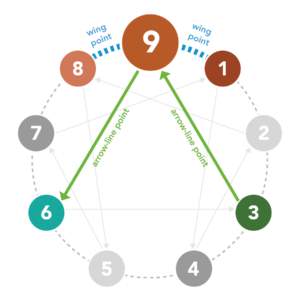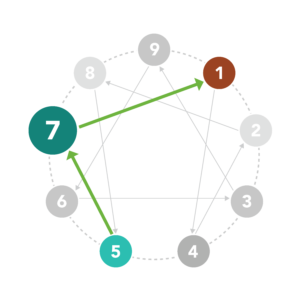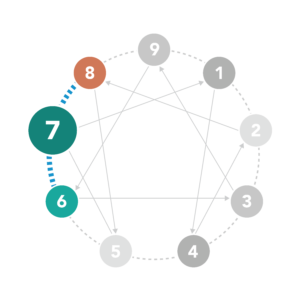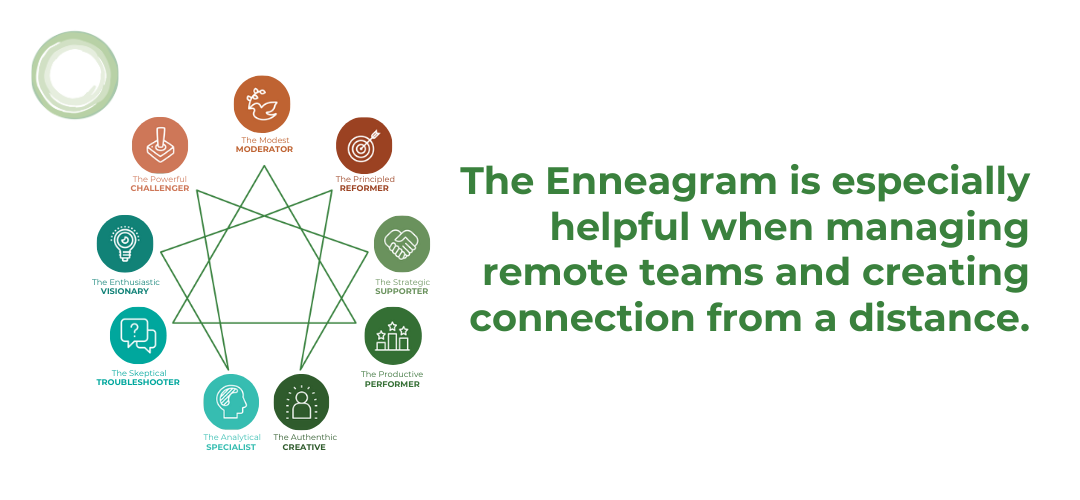“Okay, I know I’m a 3 and that’s been really helpful,” my friend says over a plate of roasted vegetables. She stabs a sweet potato with her fork and points it at me. “But then what? What do I do with that information? How does knowing my Enneagram type help? How do I use that to be better at work and life?”
This particular conversation might have happened in the corner booth of an Italian restaurant, but it’s one I’ve had a million times—in boardrooms, with HR, with the person sitting next to me on the plane.
Sure, knowing your Enneagram type is great—it helps with managing conflict, improves communication, makes teams more effective, etc. But does knowing your Enneagram help you grow as an individual and as a leader?
The answer is ABSOLUTELY! That is the beauty of the model.
If you’re ready to go beyond awareness and apply your type for meaningful leadership growth, start with our Enneagram Applied course.
2 ways to use your Enneagram type TO DEVELOP YOUR LEADERSHIP STYLE
The Enneagram diagram itself can serve as a powerful growth map by providing customized and meaningful paths of development for each personality type. Each type is connected to four other types—two on each side, referred to as wing points, and two arrow-line points that are connected to your main type.

These four types offer specific development stretches—the wing points provide more gentle developmental steps, and the arrow-line points provide more radical developmental movements.
Let’s apply the above with a real example.
I’m a Type 7, Enthusiastic Visionary. My two arrow lines are Type 5 and Type 1. My wing styles are Type 6 and Type 8. Here are some examples of how I can grow with this in mind:
- Follow your Enneagram arrows [Paths of growth for Type 7]

- Five Arrow Line (Analytical Specialist): Go inward and dig deeper. The ability to innovate, which is core to Type 7, is enhanced when you consciously dedicate more time to thinking through what you are doing and learning in greater depth. Give yourself alone time to reflect on your emotions and become present to any anxieties. Meditate. [Now you know why I’m such a believer and have a daily practice of meditation.]
- One Arrow Line (Principled Reformer): Develop a structured path to quality outcomes. After allowing for a creative process to generate positive possibilities, which is typical for Type 7, pay attention to the processes and action steps required to implement your vision. With a clear sense of what “perfect” looks like, allow yourself to enjoy the benefits of adhering to rules, structured plans, and time commitments to make your idea a reality. [While many 7s can rebel against structure, I’ve learned that structure gives me the freedom I ultimately seek.]
Want to understand how your Enneagram arrows and wings shape your leadership style? Our executive coaching offers customized growth strategies for every type.
- Reach out to your Enneagram wings [Paths of growth for Type 7]

- Six Wing (Skeptical Troubleshooter): Learn to face what’s negative. Add a strong ability to detect threats, risks, and bad news to your problem-solving repertoire. Expand your creative tool kit to include a realistic assessment of what’s not working or what feels bad to balance out your natural optimism and positive outlook. Schedule equal amounts of time to hear the bad news and the good news. [Oh boy, have I learned the hard way in my personal life on this one!]
- Eight Wing (Powerful Challenger): Fewer ideas, more action. Balance your ability to brainstorm and imagine divergent possibilities with an ability to know when it’s time to focus and act. Move out of the mental space and into your body to enable your big ideas to translate into bold action steps. Lean less on your ability to intellectually charm people and develop more brute strength and courage behind your convictions. [Over the years, I’ve had to lean heavily into this wing to have success as an entrepreneur and CEO coach. Without it, I’m just someone full of ideas with no execution.]
Again, this is just an example of the path of growth for a Type 7. Your growth path, as a different type, would be a different set of wing and arrow styles.
Want to know what the path of growth is for your Enneagram type? Check out this resource on EERTools.com.
We all have blind spots and places to grow. The Enneagram is a map to help us uncover the treasure within us and rise in our leadership effectiveness.

I talked about these topics more in-depth on this recent podcast interview—click here to listen!
Want assistance applying the Enneagram to your team or yourself? Here’s how we can help.


